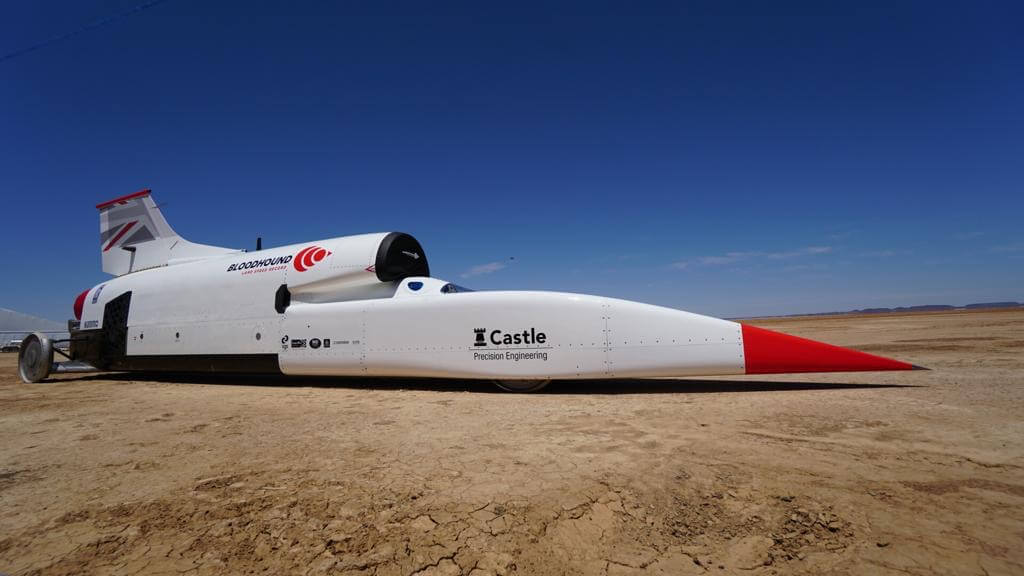After being rescued from the financial doldrums, the project to get a car to drive to 1000mph is reaching its final stages.
Bloodhound SSC, named after the United Kingdom’s Bloodhound surface-to-air missiles, was almost a completed vehicle when the project ran out of cash and into administration last year. The doors closed at the project’s Bristol HQ, which we visited in 2017, when the team couldn’t find £25m — or about what the Lakers pay Lebron James every year — to finish everything off.
In stepped a savior: the Yorkshire-based Ian Warhurst, managing director of a company that supplies aftermarket turbochargers. Warhurst bought the car and the project, moved it to a new headquarters in Gloucestershire, and renamed it “Bloodhound LSR” — for “Land Speed Record” (rather than “Super Sonic Car”).
Now, ten months later, the car is in racing specification and ready to roll on its first high speed runs. Pilot/driver Andy Green — the current land speed record holder at 763mph in Thrust SSC — has already driven the car at 200mph at Newquay Airport, but as that only took two seconds of full throttle it’s time to stretch the car’s legs a bit.

The Bloodhound team has flown the car out to its custom-built test track in South Africa. Previous land speed records have used a run at Black Rock Desert in Nevada, after running out of space at Bonneville. However the 1,000mph Bloodhound requires something a little larger to accomplish its design speed.
That meant finding the perfect location, which used observations from NASA’s Space Shuttle program, satellite imagery and a lot of computing power. Even when the team had found an ideal spot — Hakskeen Pan in South Africa — the desert needed clearing of all its rocks… by hand. After moving over 16,000 tons of rock, the 24-square mile area, broadly equivalent to a single-track road that runs halfway around the planet, is now home to Bloodhound’s initial high-speed testing
The keen-eyed will spot one thing missing from Bloodhound at the moment. It’s a hybrid rocket/jet car, but there’s no rocket yet. That’s because the team plans to run up to only 500mph — yes, “only” 500mph — in this first phase, to determine how the various components function as drag increases.

This will include the aluminum wheels, seen here for the first time fitted to the car. Castle Engineering has made these from single pieces of aluminum and then machined them by hand to 1-micron tolerances to spin at up to 10,500rpm safely. Each wheel will eventually be subjected to forces 50,000 greater than gravity.
Bloodhound will also test out the airbrakes, which the car will later use to decelerate from 800mph to 600mph. It’ll also analyze the forces from the low-speed parachutes, and the disc brakes which the car will use to slow from 250mph to rest. At every step of the way, the team will look at the data from 192 pressure sensors and compare them to the computer models, before increasing the speeds up to 500mph.
All being well, Bloodhound will then get its Nammo rocket engine and head back to South Africa for its first transonic runs before going for the 1,000mph mark some time in the next 18 months.
See more articles on Bloodhound SSC.









